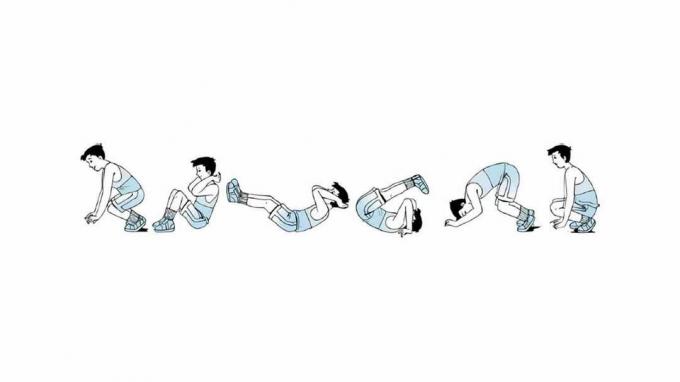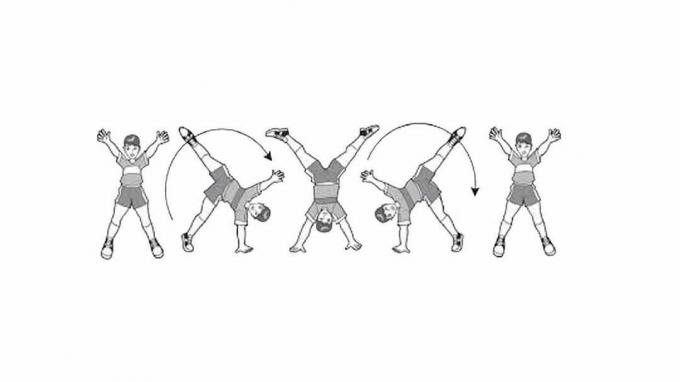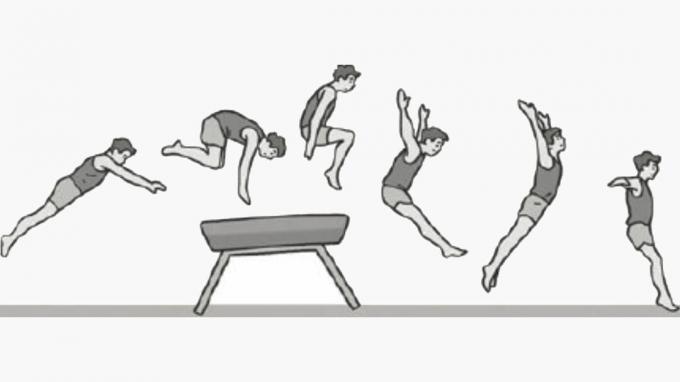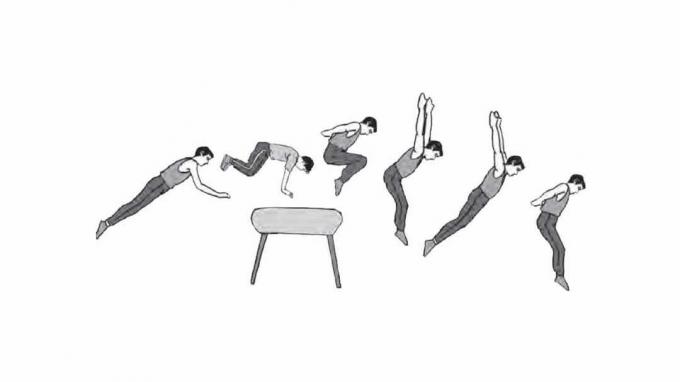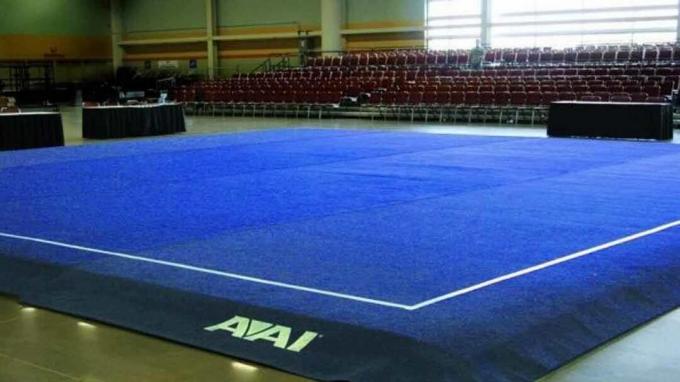Agility Gymnastics: Definition, Benefits, Gymnastics Tools
Agility gymnastics is gymnastics that in practice can use tools or can not use tools.
Gymnastics is a form of physical exercise that aims to increase endurance or to maintain the body.
Body coordination, body flexibility and also to shape the body to become an ideal shape and maintain a healthy body.
Agility Gymnastics or what is called artistic gymnastics because the forms of the gymnastics have appropriate rules.
The agility gymnastics is also competed like other sports.
Things that are judged from agility gymnastics are when making movements, accuracy, beauty and also balance during the final stance.
Agility gymnastics can be done using several methods. Such as the single bar method, parallel bars, tiered bars, saddle horses and bracelets.
The movements of agility gymnastics are such as harmony movements, balance movements, flexibility and flexibility movements, beauty movements and also agility movements.
Table of contents
Benefits of Agility Gymnastics
1. Body Fitness
Body fitness will definitely be obtained after doing agility gymnastics because it makes the body fitter.
When the body is fit, the body is getting fresher and not weak and lethargic, the appearance will be good. When the agility seam is done regularly, the muscles in the body will be formed and will be tighter.
2. Muscles Get Tight
Muscles become tight if you do agility exercises regularly and not just once or twice.
Agility gymnastics can build muscle like doing it 3 times a week or more.
3. Make Your Body Beautiful
If you often do exercise then the body will be ideal. Because many agility gymnastics have a movement that can burn fat in the body.
In agility gymnastics, you can use tools to help burn fat and you can also not use tools.
4. Healthy body
When sweat comes out during exercise the body also experiences an increase in higher endurance. And body health must be maintained properly by exercising regularly.
In the agility gymnastics at the beginning we practice must be accompanied by an experienced trainer. It is intended for anyone to observe the movement is correct or not and can also train.
When it is correct to do agility exercises, you can do it yourself without a coach or help from others.
Agility Gymnastics Without Tools
1. Front Roll
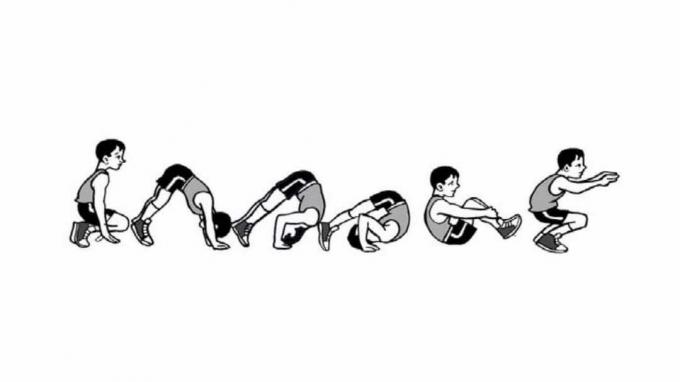
Roll forward or what is called a forward roll. Forward rolling is a rolling movement with various stages, starting from the nape, back, waist and back of the pelvis for the final movement.
The correct way to roll is as follows:
- At first take a squat position, bring your feet together, and position your hands parallel to your shoulders.
- Place both palms on the mat at shoulder width.
- The elbows are bent to the side and the head is tucked between the hands. Then press the nape of the neck to the mat and roll forward to slowly push the weight forward.
- After that, the knees are folded, the knees and chin are pulled towards the chest with the hands embracing the knees.
- The last position is squatting with the feet together, and the final movement must be balanced so as not to collapse.
2. Roll Back
Roll back or what is called a back roll. Back roll is a movement that has its own sequence starting from the hips, back waist, back, back of the head and legs as the last part.
- The initial attitude of the back roll is to take a squatting position with the mat behind you, arms straight ahead.
- The body is lowered by pulling the chin to the chest and then bending the arms and adjusting the palms in an upward position, Place the thumbs near the ears.
- Repel your hands until they are straight with your buttocks until they are past the highest point when you roll your body backwards. Landing is done by removing the legs and arms from the mat, the view remains focused ahead and maintains balance.
3. wheeling
Wheeling is the same sideways rolling motion as a wheel. Meroda was taught at school, the movement can be done with the hands and feet alternately.
The correct wheeling motion is by:
- At the beginning of the stance, take a standing position upright on the mat, then your feet are shoulder-width apart and your hands are raised up.
- the next movement is a movement to the right side, the way is that the right hand is twisted or attached to the mat as a pedestal on the right side.
- The left leg is lifted together by placing the left hand next to the right hand and then the position of the foot is on top.
- Then finally, the right hand is raised and the left hand touches the mat until the body is standing upright again.
Agility Gymnastics Using Tools
Here are some of the agility exercises that use the help of tools.
1. Jump Squat
The squat jump has the benefit of increasing strength, agility, courage, agility, agility and concentration.
To perform the squat locat movement is as follows:
- Take a standing position and run quickly. Lean your torso forward, then do a push on both feet while on the kickboard and swing your arms up.
- The movement of the hands rests on the base of the stance and the gaze is focused forward that is close to both hands.
- Rejection is done by using both hands firmly and knees bent towards the chest, the legs are straightened when the position is at the end of the stance.
- Landing is done using the tips of the feet and both hands stretched up.
2. Straddle Jump
The straddle jump has benefits such as the squat jump, the straddle jump is a movement like jumping to get through obstacles.
When the body floats in the air, the horses in the hands are stretched.
The straddle jump has the following movements and stages:
- Stand up position then run quickly then lean forward and do a resisting motion with both feet on the board as hard as you can.
- It can also be accompanied by a swing movement back down forward, then straighten the body, separating the legs.
- When your hands touch the base of the horse and make a strong repulsion movement, the body will float on the horses with a straight attitude. Then spread your arms and keep your eyes focused on the front.
- Landing is done by using the tip of the foot spread and both hands stretched up.
Agility Gymnastics Tool
Several tools can be used for agility exercises. Agility gymnastics tools have different functions.
Examples of agility gymnastics are:
1. Floor Exercise (Floor)
The floor is really needed in agility gymnastics because every gymnastic movement is done on the floor.
The floor used for agility gymnastics is not an ordinary floor but has become an applicable standard. The size of the agility gymnastic floor is about 12 meters x 12 meters.
A non-slip floor that is used for agility exercises so that you don't get injured when doing gymnastics.
2. Mattress
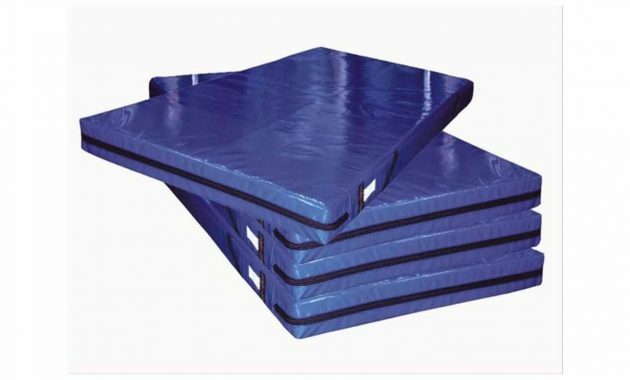
In some agility gymnastics requires a mat to perform the movement.
Actually, most of the gymnastics definitely use a mat for the base.
The mat used is a soft and non-slip mat in order to reduce the risk of injury during exercise.
Many mattresses are sold like in sports shops and the price is quite affordable and depends on the material.
In floor exercise, you must use a mat as a base.
3. Saddle Horses
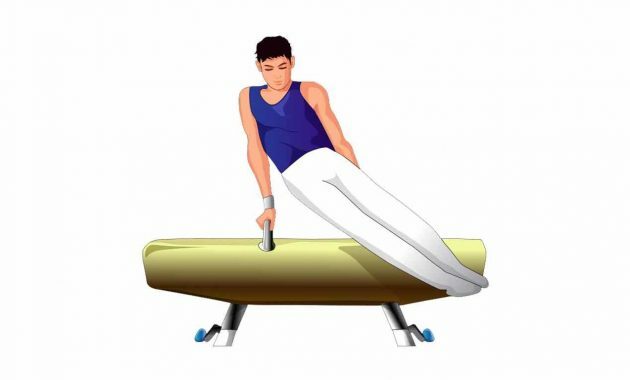
The saddle horse is indeed often used in agility gymnastics and the shape of the saddle horse is similar to a horse's back that extends like a seat.
Exercise using the tool is by jumping to the end without hitting the saddle holder. The movements used are flank, double circle and thomas fair.
4. Bracelets
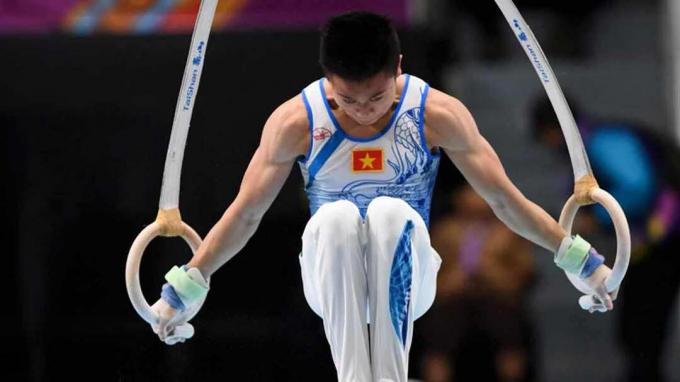
Bracelets are tools that are shaped like two circles and are shaped like large bracelets used in agility gymnastics.
The athlete hangs on the bracelet which is connected by two ropes, and the athlete performs a leaning and swinging motion.
In addition to these movements, athletes can also go up and down to strengthen their hand muscles.
The height of the bracelet is 2.8 to 3 meters, the bracelet has a diameter of 18 cm and the distance between the bracelets is 50 cm
5. Parallel Cross
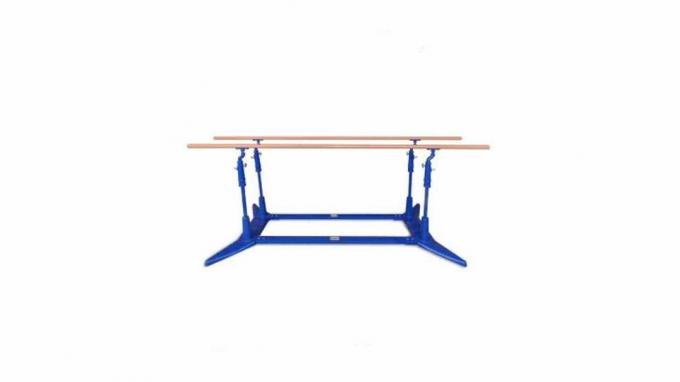
The parallel bars are about 330 cm long and 175 cm high and the bars are about 40-50 cm wide.
Parallel bars are often used in agility gymnastics and these tools can be adjusted according to their needs.
Most of the movements used using these tools such as swinging the arms, shoulders and hands are allowed to be used. And can not use other body movements.
The bar also has a high bar and a low bar. Can do front dosmount, rear mounted, shoulder stand, straddle travel and others.
6. Single Cross
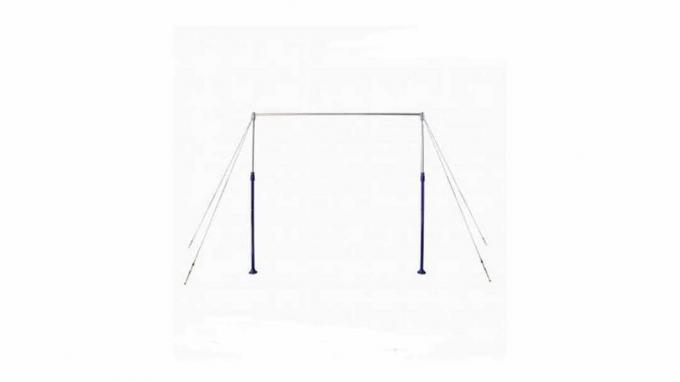
Parallel bars are often used in movements such as challenging and attractive. With one bar that has been adjusted in height.
Used in world tournaments and very complicated moves such as pull overs, back hips circle, run under single and front hip circle, back mill, single knee mount and many more other.
The movement of a single bar is more complicated than that of a parallel bar.
7. Horses Jump
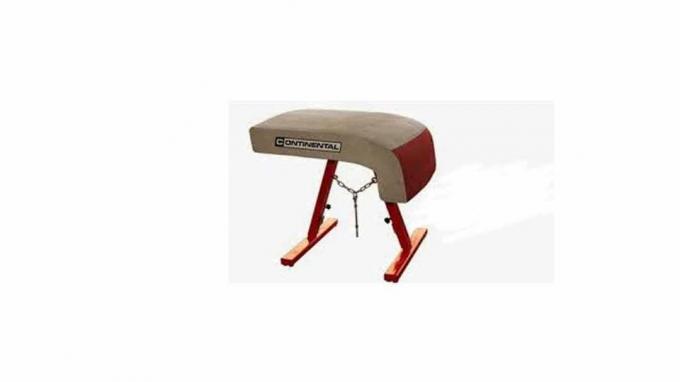
The tool has a slightly different shape from a saddle horse. The length of the jumping horses is 1.2 meters and the height is 1.35 meters.
Jumping horses have a lower height and are often used in squat jumps, standing jumps and many others.

